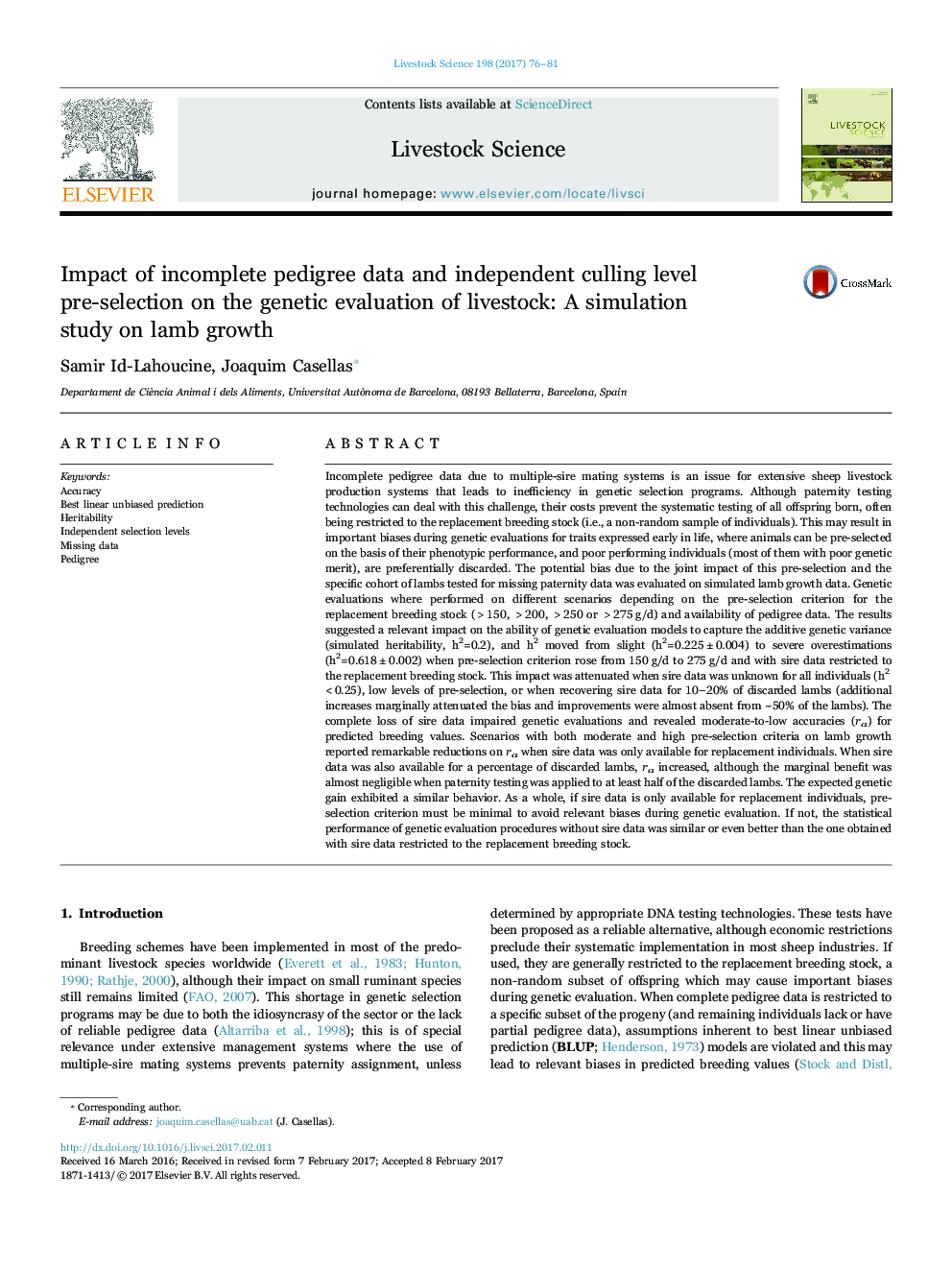| Article ID | Journal | Published Year | Pages | File Type |
|---|---|---|---|---|
| 5543124 | Livestock Science | 2017 | 6 Pages |
Abstract
Incomplete pedigree data due to multiple-sire mating systems is an issue for extensive sheep livestock production systems that leads to inefficiency in genetic selection programs. Although paternity testing technologies can deal with this challenge, their costs prevent the systematic testing of all offspring born, often being restricted to the replacement breeding stock (i.e., a non-random sample of individuals). This may result in important biases during genetic evaluations for traits expressed early in life, where animals can be pre-selected on the basis of their phenotypic performance, and poor performing individuals (most of them with poor genetic merit), are preferentially discarded. The potential bias due to the joint impact of this pre-selection and the specific cohort of lambs tested for missing paternity data was evaluated on simulated lamb growth data. Genetic evaluations where performed on different scenarios depending on the pre-selection criterion for the replacement breeding stock (>150, >200, >250 or >275 g/d) and availability of pedigree data. The results suggested a relevant impact on the ability of genetic evaluation models to capture the additive genetic variance (simulated heritability, h2=0.2), and h2 moved from slight (h2=0.225±0.004) to severe overestimations (h2=0.618±0.002) when pre-selection criterion rose from 150 g/d to 275 g/d and with sire data restricted to the replacement breeding stock. This impact was attenuated when sire data was unknown for all individuals (h2<0.25), low levels of pre-selection, or when recovering sire data for 10-20% of discarded lambs (additional increases marginally attenuated the bias and improvements were almost absent from ~50% of the lambs). The complete loss of sire data impaired genetic evaluations and revealed moderate-to-low accuracies (ra) for predicted breeding values. Scenarios with both moderate and high pre-selection criteria on lamb growth reported remarkable reductions on ra when sire data was only available for replacement individuals. When sire data was also available for a percentage of discarded lambs, ra increased, although the marginal benefit was almost negligible when paternity testing was applied to at least half of the discarded lambs. The expected genetic gain exhibited a similar behavior. As a whole, if sire data is only available for replacement individuals, pre-selection criterion must be minimal to avoid relevant biases during genetic evaluation. If not, the statistical performance of genetic evaluation procedures without sire data was similar or even better than the one obtained with sire data restricted to the replacement breeding stock.
Related Topics
Life Sciences
Agricultural and Biological Sciences
Animal Science and Zoology
Authors
Samir Id-Lahoucine, Joaquim Casellas,
